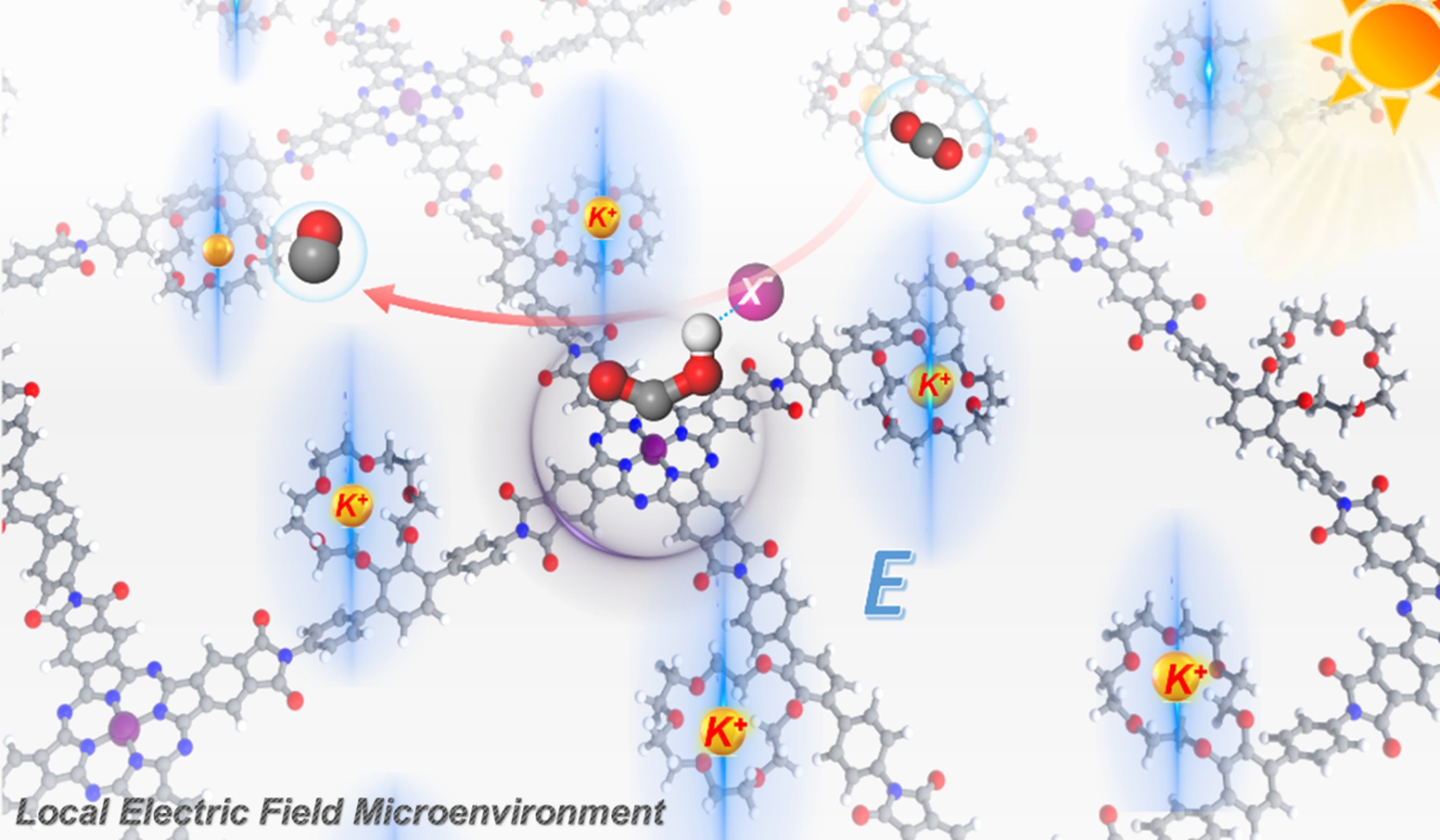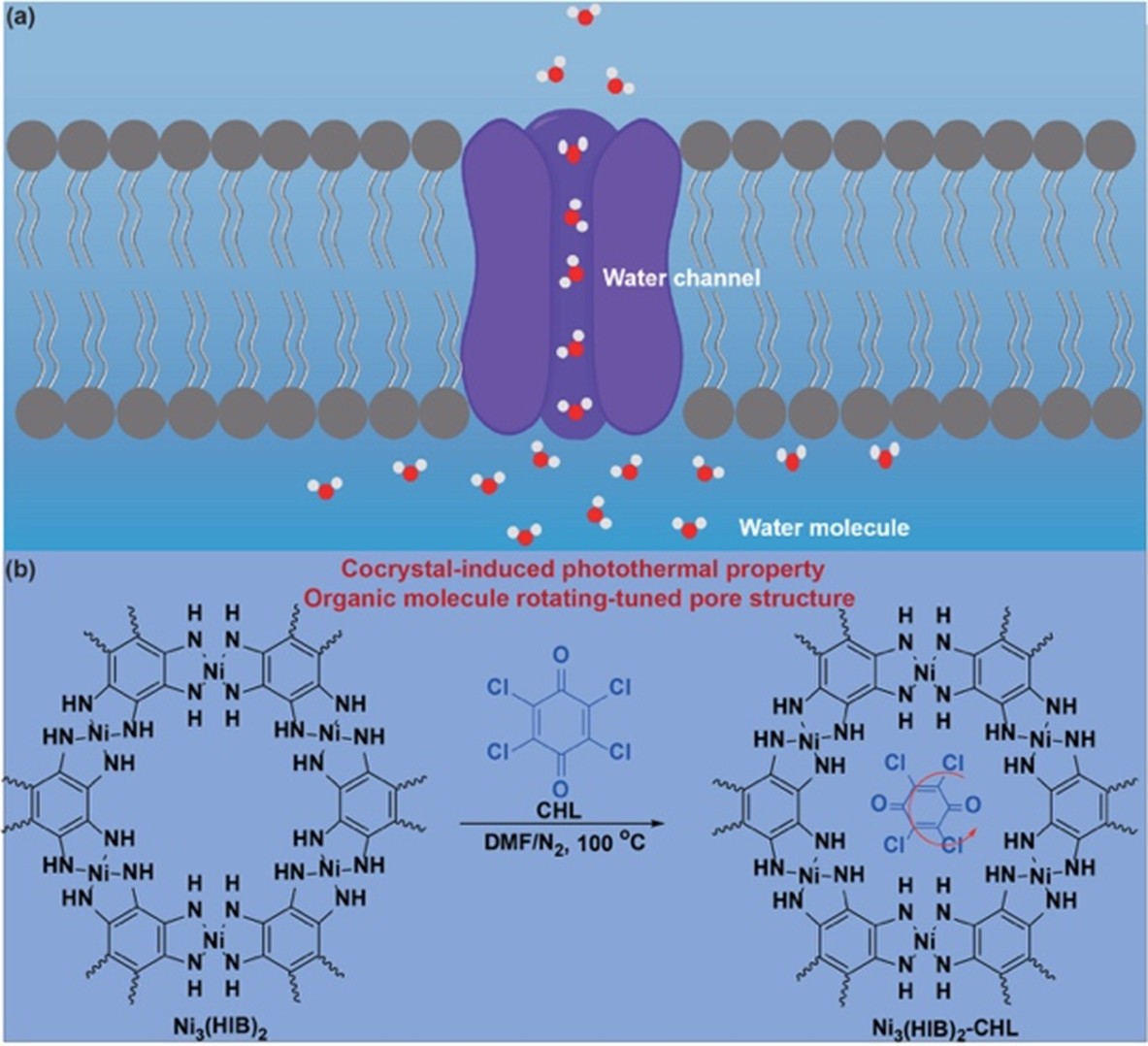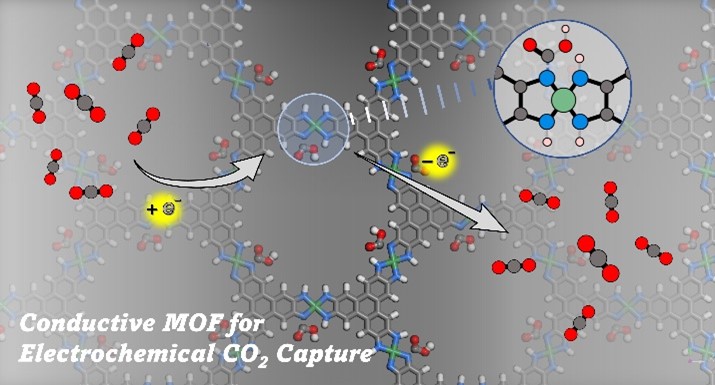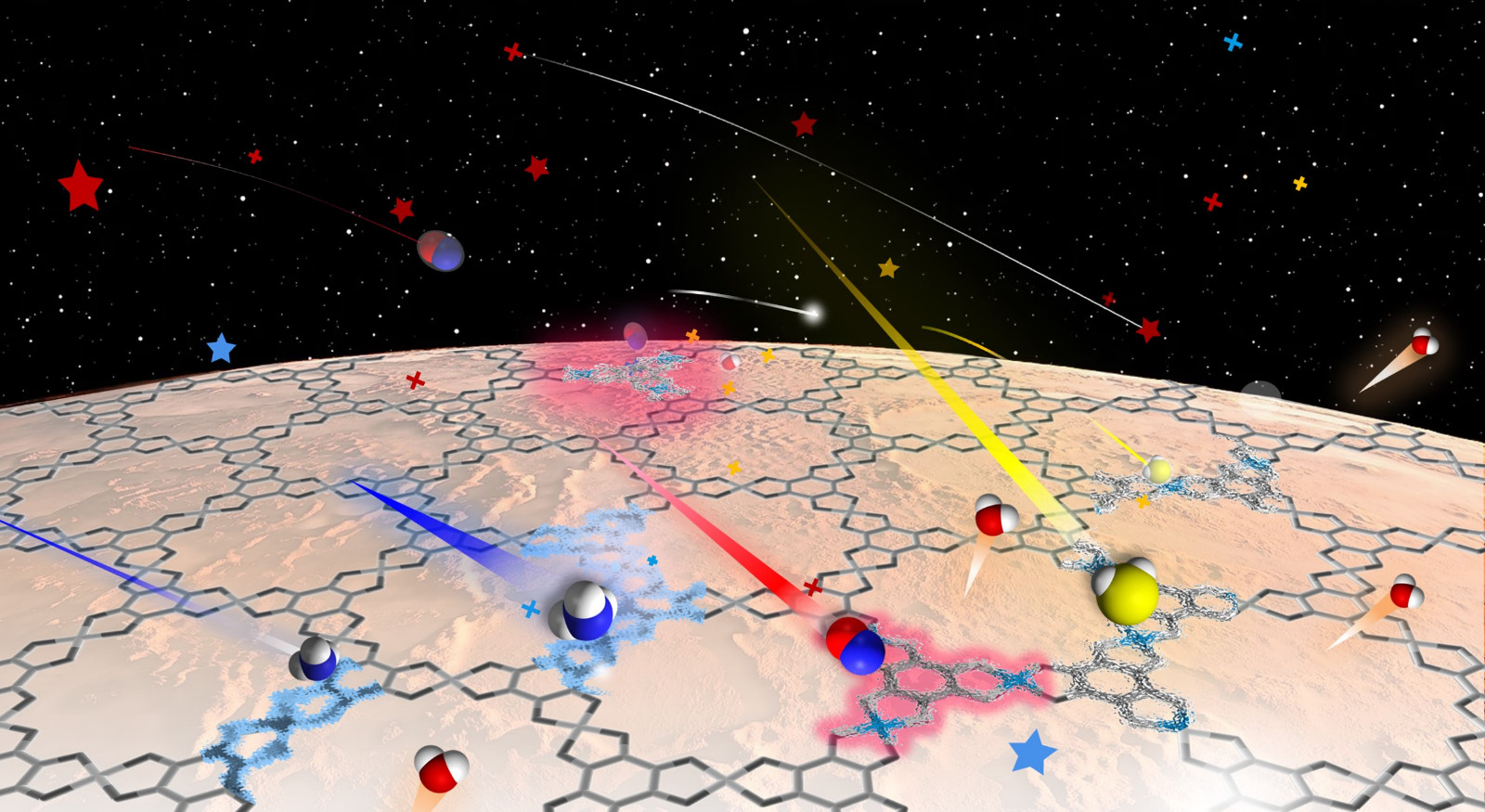51. Yang, M.; Tan, J.;* Wang, Z.; Li, D.; Xu, W.; Wang, H.;* Yuan, L.; Yang, C.; Meng, Z.* Enhanced Electrical Conductivity by the Heavy Chalcogen Effect in Metal–Organic Frameworks. J. Am. Chem. Soc. 2025, https://doi.org/10.1021/jacs.5c08594.

50. Chen, W.; Zhang, Y.; Yang, M.; Yang, C.;* Meng, Z.* Single-Point Linkage Engineering in Conjugated Phthalocyanine-Based Covalent Organic Frameworks for Electrochemical CO2 Reduction. Nano-Micro Lett. 2025, 17, 252.

49. Jiao, J.; Yang, M.; Ye, X.; Zhang, Y.; Jiang, Y.;* Meng, Z.* A Trimming-π Strategy for Constructing Functional Conductive Metal-Organic Frameworks Using Metalloporphyrazine Units. Angew. Chem. Int. Ed. 2025. e202502066.

48. Zhang, Y.; Guan, X.; Meng, Z.;* Jiang, H.-L.* Supramolecularly Built Local Electric Field Microenvironment around Cobalt Phthalocyanine in Covalent Organic Frameworks for Enhanced Photocatalysis. J. Am. Chem. Soc. 2025, 147, 3776−3785.

47. Wang, X.; Zhao C.; Yang, M.; Baek, J-H.; Meng, Z.; Sun, B.; Yuan, A.; Baek, J-B.;* He, X.;* Jiang, Y.; Zhu, M.* Bioinspired Photothermal Metal-Organic Framework Cocrystal with Ultra-Fast Water Transporting Channels for Solar-Driven Interfacial Water Evaporation. Small 2025, 21, 2407665.

46. Liu, J.; Yang, M.; Zhou, X.; Meng, Z.;* Solid-State Electrochemical Carbon Dioxide Capture by Conductive Metal-Organic Framework Incorporating Nickel Bis(diimine) Units. J. Am. Chem. Soc. 2024, 146, 33093−33103.

45. Li, Z.; Jiao, J.; Fu, W.;* Gao, K.; Peng, X.; Wang, Z.; Zhuo, H.; Yang, C.; Yang, M.; Chang, G.; Yang, L.; Zheng, X.; Yan, Y.; Chen, F.; Zhang, M.; Meng, Z.;* Shang, X.* Integration of Perylene Diimide into a Covalent Organic Framework for Photocatalytic Oxidation. Angew. Chem. Int. Ed. 2024, 63, e202412977.

44. Yang, M.;+ Zhang, Y.;+ Zhu, R.; Tan, J.;* Liu, J.; Zhang, W.; Zhou, M.; Meng, Z.* Two-Dimensional Conjugated Metal–Organic Frameworks with a Ring-in-Ring Topology and High Electrical Conductance. Angew. Chem. Int. Ed. 2024, e202405333.

43. Meng, Z.;* Stolz, R. M.; Moraes, L. S. D.; Jones, C. G.; Eagleton, A. M.; Nelson, H. M.;* Mirica, K. A.* Gas-Induced Electrical and Magnetic Modulation of Two-Dimensional Conductive Metal–Organic Framework. Angew. Chem. Int. Ed. 2024, e202404290.

42. Suleman, S.; Zhang Y.; Zhang, J.; Lin, Z.; Metin, Ö.; Meng, Z.;* Jiang, H-L.* Turning on Singlet Oxygen Generation by Outer-Sphere Microenvironment Modulation in Porphyrinic Covalent Organic Frameworks for Photocatalytic Oxidation. Angew. Chem. Int. Ed. 2024, 63, e202314988.

41. Zhang, Y.; Zhangt, X-Y.; Jiao, L.; Meng, Z.;* Jiang, H-L.*Conductive Covalent Organic Frameworks of Polymetallophthalocyanines as a Tunable Platform for Electrocatalysis. J. Am. Chem. Soc. 2023, 145, 24230-24239.
40. Suleman, S.; Guan, X-Y,; Zhang Y.; Waseem, A.; Metin, Ö.; Meng, Z.;* Jiang, H-L.* Regulating the Generation of Reactive Oxygen Species for Photocatalytic Oxidation by Metalloporphyrinic Covalent Organic Frameworks. Chem. Eng. J. 2023, 476, 146623.
39. Suleman, S.; Sun, K.; Zhao, Y-M.; Guan, X-Y.; Lin, Z-Y.; Meng, Z.;* Jiang, H-L.* Enhanced Photocatalytic CO2 Reduction via Linkage Substitution in Porphyrinic Covalent Organic Frameworks. CCS Chem. 2023.
38. Yang, G.; Shi, W-W.; Qian, Y-Y.; Zheng, X.;* Meng, Z.; Jiang, H-L.* Turning on Asymmetric Catalysis of Achiral Metal-Organic Frameworks by Imparting Chiral Microenvironment. Angew. Chem. Int. Ed. 2023, 62, e202308089.
37. Sui, J-F.; Gao, M-L.; Liu, C-Y.; Pan, Y.; Meng, Z.;* Yuan, D-Q.; Jiang, H-L.* Modulating the microenvironment of AuPd nanoparticles using metal–organic frameworks for selective methane oxidation. J. Mater. Chem. A. 2023, 11, 18733-18739.
36. Guo, M-C.; Meng, Q-Q.; Chen, W-Y.; Meng, Z.; Gao, M-L.; Li, Q-X.; Duan, X-Z.; Jiang, H-L.* Dual Microenvironment Modulation of Pd Nanoparticles in Covalent Organic Frameworks for Semihydrogenation of Alkynes. Angew. Chem. Int. Ed. 2023, 62, e202305212.
35. Sui, J.; Gao, M-L.; Qian, B.; Liu, C.; Pan,Y.; Meng, Z.;* Yuan, D.; Jiang, H-L.*Bioinspired Microenvironment Modulation of Metal-Organic Framework-Based Catalysts for Selective Methane Oxidation. Sci. Bull. 2023, 68, 1886-1893.
34. Liu, K.-K.;† Meng, Z.;† Fang, Y.;* Jiang, H-L.* Conductive MOFs for Electrocatalysis and Electrochemical Sensor. eScience 2023, 100133. († equal contribution)
1. Meng, Z.; Jones C.; Farid S.; Khan I. U.; Nelson H. M.,* Mirica, K. A.* Unraveling the Electronic Structure and Chemiresistivity of Two Dimensional Conductive Metal-Organic Framework Cu3(C6O6)2 Using Microcrystal Electron Diffraction. Angew. Chem. Int. Ed. 2022, 61, e202113569.
2. Aykanat, A.;† Meng, Z.;† Stolz, R. M.; Morrell C. T.; Mirica, K. A.* Bimetallic Two-Dimensional Metal–Organic Frameworks for the Chemiresistive Detection of Carbon Monoxide. Angew. Chem. Int. Ed. 2022, 61, e202113665. († equal contribution)
3. Eagleton, A. M.; Ko, M.; Stolz, R. M.; Vereshchuk, N.; Meng, Z.; Mendecki, L.; Levenson, A. M.; Huang, C.; MacVeagh, K. C.; Mahdavi-Shakib, A.; Mahle, J. J.; Peterson, G. W.; Frederick, B. G.; Mirica, K. A.* Fabrication of Multifunctional Electronic Textiles Using Oxidative Restructuring of Copper into a Cu-based Metal–Organic Framework. J. Am. Chem. Soc. 2022, 144, 23297–23312.
4. Meng, Z.; Mirica, K. A.* Covalent Organic Frameworks as Advanced and Multifunctional Materials for Chemical Detection. Chem. Soc. Rev. 2021, 50, 13498–13558.
5. Meng, Z.; Mirica, K. A.* Two-Dimensional d-π Conjugated MOF based on Hexahydroxyltrinaphthylene. Nano Res. 2021, 14, 369–375.
6. Aykanat, A.; Jones, C. G.; Cline, E.; Stolz, R. M.; Meng, Z.; Nelson, H. M.* Mirica K. A.* Conductive Stimuli-Responsive Coordination Network Linked with Bismuth for Chemiresistive Gas Sensing. ACS Appl. Mater. Interfaces. 2021, 13, 60306−60318.
7. Meng, Z.;† Luo, J.M.;† Li, W.;* Mirica, K. A.* Hierarchically Reticular Tuning the Performance of Electro-chemical Reduction of Carbon Dioxide Using Conductive Two-Dimensional Metallophthalocyanine Based Metal−Organic Frameworks. J. Am. Chem. Soc. 2020. 142, 52, 21656–21669. († equal contribution)
8. Aykanat, A.; Meng, Z.; Mirica, K. A.* Molecular Engineering of Multifunctional Metallophathlocyanine and Metalloporphyrin Electrochemically Active Framework Materials. Chem. Mater. 2020, 32, 5372–5409.
9. Ko, M.; Mendecki, L.; Eagleton, A.; Durbin, C. G.; Stolz, R. M.; Meng. Z.; Mirica, K. A.* Employing Conductive Metal–Organic Frameworks for Voltammetric Detection of Neurochemicals. J. Am. Chem. Soc. 2020, 142, 11717–11733.
10. Meng, Z.; Stolz, R. M.; Mirica, K. A.*Two-Dimensional Chemiresistive Covalent Organic Framework with High Intrinsic Conductivity. J. Am. Chem. Soc. 2019, 141, 11929–11937.
11. Meng, Z.; Aykanat, A.; Mirica, K. A.* Welding Metallophthalocyanines into Bimetallic Molecular Meshes for Ultra-Sensitive, Low-Power Chemiresistive Detection of Gases. J. Am. Chem. Soc. 2019, 141, 2046–2053.
12. Meng, Z.;† Stolz, R. M.;† Mendecki, L.;† Mirica, K. A.* Electrically-Transduced Chemical Sensors Based on Two-Dimensional Nanomaterials. Chem. Rev. 2019, 119, 478–598. († equal contribution)
13. Meng, Z.; Aykanat, A.; Mirica, K. A.* Proton Conduction in 2D Aza-Fused Covalent Organic Frameworks. Chem. Mater. 2019, 31, 819–825.
14. Shi, Q.; Meng. Z.; Xiang, J.-F.; Chen, C.-F.* Efficient Control of Movement in Non-photoresponsive Molecular Machines by a Photo-induced Proton-transfer Strategy. Chem. Commun. 2018, 54, 3536–3539.
15. Mendecki, L.; Ko, M.; Zhang, X.; Meng, Z.; Mirica, K. A.*Porous Scaffolds for Electrochemically Controlled Reversible Capture and Release of Ethylene. J. Am. Chem. Soc. 2017, 139, 17229–17232.
16. Meng, Z.; Xiang, J.-F.; Chen, C.-F.* Directional Molecular Transportation Based on a Catalytic Stopper-Leaving Rotaxane System. J. Am. Chem. Soc. 2016, 138, 5652–5658.
17. Meng, Z.; Wang, B.-Y.; Xiang, J.-F.; Shi, Q.; Chen, C.-F.* Self-Assembly of a [2]Pseudorotaxane by an Inchworm-Motion Mechanism. Chem. Eur. J. 2016, 22,15075 –15084.
18. Wang, H.-X.; Meng, Z.; Xiang, J.-F.; Xia, Y.-X.; Sun, Y.; Hu, S.-Z.; Chen, H.; Yao, J.; Chen, C.-F.* Guest-Dependent Directional Complexation Based on Triptycene Derived Oxacalixarene: Formation of Oriented Rotaxanes. Chem. Sci., 2016, 7, 469–474.
19. Zhang, G.-W.; Li, P.-F.; Meng, Z.; Wang, H.-X.; Han, Y.; Chen, C.-F.* Triptycene-Based Chiral Macrocyclic Hosts for Highly Enantioselective Recognition of Chiral Guests Containing a Trimethylamino Group. Angew. Chem. Int. Ed. 2016, 128, 5390–5394.
20. Wang, H.-X.; Hu S.-Z.; Meng, Z.; Han, Y.; Chen, C.-F.* Synthesis and Structures of Triptycene-Derived Oxacalixarenes with Expanded Cavities: Tunable and Switchable Complexation Towards Bipyridinium Salts. Chem. Asian. J. 2016, 11, 2756–2762.
21. Han, Y.; Meng, Z.; Ma, Y.-X.; Chen, C.-F.* Acid/Base Controllable Complexation of a Triptycene-Derived Macrotricyclic Host and Protonated 4,4′-Bipyridinium/Pyridinium Salts. Chem. Commun. 2016, 52, 590–593.
22. Meng, Z.; Han, Y.; Wang, L.-N.; Xiang, J.-F.; He, S.-G.; Chen, C.-F.* Stepwise Motion in a Multivalent [2](3)Catenane. J. Am. Chem. Soc. 2015, 137, 9739–9745.
23. Meng, Z.; Chen, C.-F.* A Molecular Pulley Based on a Triply Interlocked [2]Rotaxane. Chem. Commun. 2015, 51, 8241-8244.
24. Han, Y.; Meng, Z.; Chen, C.-F.* Complexation of Triptycene-Derived Macrotricyclic Host with π-Extended Viologens. Acta Chim. Sinica. 2015, 73, 1147–1152.
25. Ma, Y.-X.; Meng, Z.; Chen, C.-F.* Synthesis of Substituted Iptycenes. Synlett. 2015, 26, 6–30.
26. Meng, Z.; Chen, C.-F.* Highly Efficient Synthesis of a Tristable Molecular Shuttle and Its Controlled Motion under Chemical Stimuli. Org. Biomol. Chem. 2014, 12, 6937–6943.
27. Meng, Z.; Xiang, J.-F.; Chen, C.-F.* Tristable [n]Rotaxanes: From Molecular Shuttle to Molecular Cable Car. Chem. Sci. 2014, 5, 1520-1525.
28. Han, Y.; Meng, Z.; Ma, Y.-X.; Chen, C.-F.* Iptycene-Derived Crown Ether Hosts for Molecular Recognition and Self-Assembly. Acc. Chem. Res. 2014, 47, 2026–2040.
29. Ma, Y.-X.; Meng, Z.; Chen, C.-F.* A Novel Pentiptycene Bis(Crown Ether)-Based [2](2)Rotaxane Whose Two DB24C8 Rings Act as Flapping Wings of a Butterfly. Org. Lett. 2014, 16, 1860–1863.
30. Zeng, F.; Meng, Z.; Han, Y.; Chen, C.-F.* Formation of a “Pseudosuitane”-Type Complex Between a Triptycene-Derived Bis(crown ether) Host and 10-(anthracene-9,10-diyl)bis(N-benzylmethanaminium): A New Method for the Synthesis of Linear Polyrotaxanes. Chem. Commun. 2014, 50, 7611–7613.
31. Gu, Y.-K.; Zeng, F.; Meng, Z.; Chen, C.-F.* Triptycene-Derived Macrotricyclic Polyether Containing an Anthracene Unit as a Powerful Host for 1,2-Bis(pyridium)ethane, Diquat and 2,7-Diazapyrenium Salt. Org. Biomol. Chem. 2014, 12, 2850–2853.
32. 《超分子组装:结构与功能》第九章, 科学出版社, 2014年.